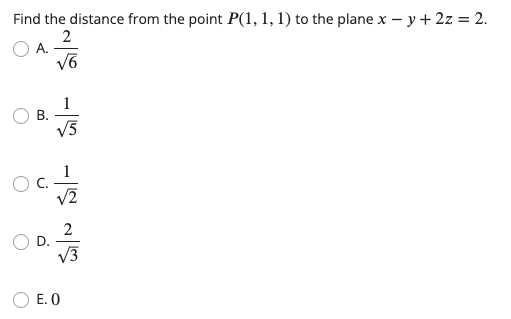Answered step by step
Verified Expert Solution
Question
1 Approved Answer
Which one of the following is a two-point form equation for the line (x, y, z) = (1, 0, -1) + t(3,4, -1)? O A.








Step by Step Solution
There are 3 Steps involved in it
Step: 1

Get Instant Access to Expert-Tailored Solutions
See step-by-step solutions with expert insights and AI powered tools for academic success
Step: 2

Step: 3

Ace Your Homework with AI
Get the answers you need in no time with our AI-driven, step-by-step assistance
Get Started


